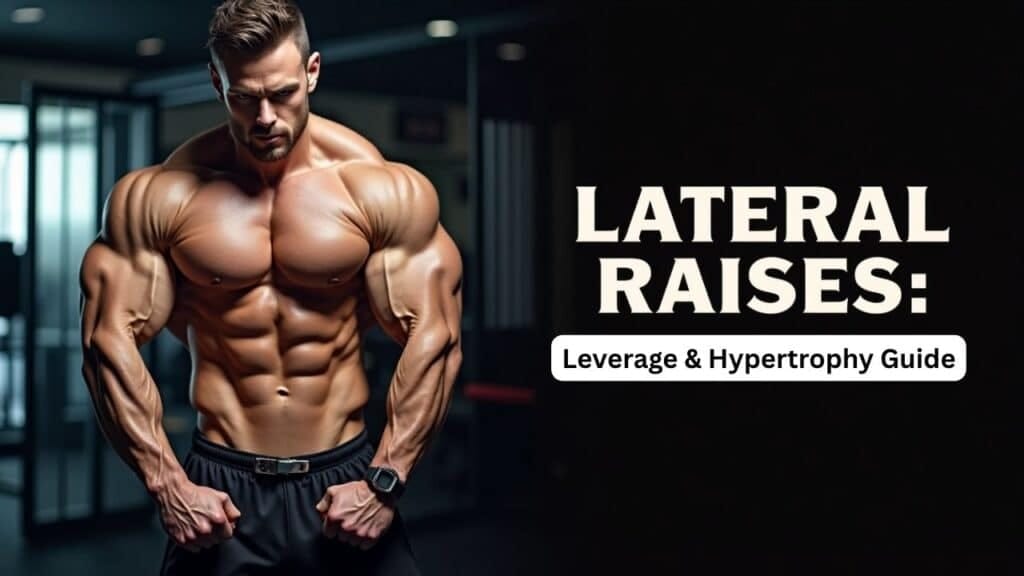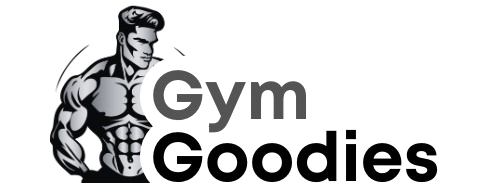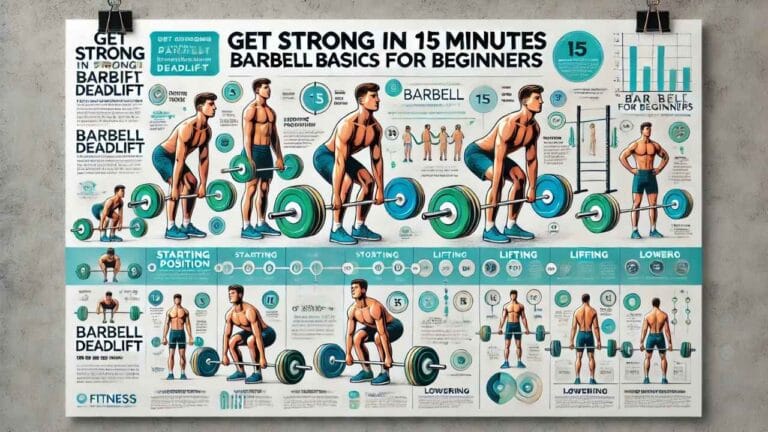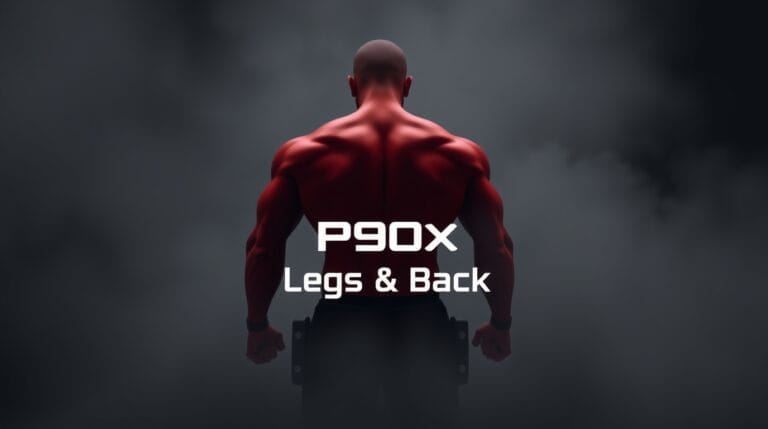Lateral Raises: The Role of Leverage in Shoulder Hypertrophy

Ever feel like your lateral raises just aren’t working? You’re lifting, you’re sweating, but your shoulders still look the same, or worse, your joints ache afterward. You’re not alone. Most lifters assume lateral raises are straightforward, but the truth? Small tweaks in leverage (bent vs. straight arm) can make or break your shoulder growth. (Harvard Health: Joint Stress and Shoulder Mechanics)
Here’s the good news: Shoulder hypertrophy isn’t about lifting heavier or grinding through pain. It’s about working with your body’s mechanics, not against them. By the end of this guide, you’ll know exactly how to tweak your form for faster growth, fewer injuries, and lifts that actually feel good.
1. Why Your Lateral Raises Aren’t Working (And What to Do Instead)
Most people blame weak delts, but the real issue is inefficient leverage.
Let’s bust a common myth: “Just do more lateral raises and you’ll build big shoulders.”
That’s like saying “just type more and you’ll become a bestselling author.” Not all reps are created equal.
Biomechanically, the farther the load is from the working joint (your shoulder), the more torque, and therefore mechanical tension, your delts experience.
A straight-arm raise maximizes this distance, while a bent-arm raise reduces it. That means bent-arm raises feel easier not because you’re stronger, just because you’re using leverage to your advantage.
The fix: Your arm angle changes muscle activation, straight-arm raises emphasize the lateral deltoid, while a slight bend shifts tension to the rear delts and traps.
Most lifters blame “weak shoulders” when their raises feel ineffective. But the real issue? Leverage. The longer your arm (straight elbow), the harder your delts work to lift the weight. Bend your elbow, and suddenly, other muscles jump in to help—which isn’t always bad, but it changes the game for hypertrophy.
Client Case Study: Jane, a long time gym-goer, swore lateral raises did nothing for her. After filming her form, we noticed she kept her arms completely straight, causing her traps to dominate the movement. By adding a 10–15° bend, she finally felt her side delts “turn on”, and within 8 weeks, her shoulders had visibly more definition.
2. The Hidden Factor Everyone Overlooks: Scapular Positioning
Counterintuitive insight: Your shoulder blades dictate delt engagement more than your arm angle.
A 2024 study in the Journal of Strength and Conditioning Research found that scapular stability (how well your shoulder blades stay controlled) directly impacts lateral raise effectiveness. If your shoulders shrug up, your traps take over. If they wing out, your rotator cuff compensates.
Your elbow angle is a sneaky load manager.
You’ve probably heard “keep a soft bend” or “arms like a T” from lifters. But here’s the real secret: changing your elbow angle changes the moment arm, aka the torque-producing distance, on your shoulder joint.
According to a 2024 study published in the Journal of Applied Biomechanics, lateral raises with a 10–15° elbow bend resulted in significantly higher medial deltoid activation than bent-arm (45°+) versions when load was equated [source: JAB, 2024].
Try this quick test:
Hold a water bottle with your arm fully straight. Now try with your arm bent 90°. Which one feels heavier after 20 seconds? That’s your delts doing leverage math behind the scenes.
Actionable Tip: Before grabbing weights, try this:
- Stand tall, arms at your sides.
- Gently pull your shoulder blades down and back (like you’re tucking them into your back pockets).
- Now lift your arms, feel the difference? That’s your delts working solo.
3. “Straight Arms Are Better” Debunked: Why Slight Bends Win for Hypertrophy
Myth: “You must keep arms perfectly straight for maximum delt activation.”
Reality: A slight bend reduces joint strain and improves mind-muscle connection.
Think of your arm like a crane:
- Straight arm = longer lever = more torque on the shoulder joint.
- Bent arm (20–30°) = shorter lever = safer, more controlled tension on the delts.
Visual Cue: “Imagine holding a glass of water in each hand, you’d naturally keep a soft bend to avoid spilling. That’s the same stability your shoulders need.”
“Bent-arm lateral raises are safer” isn’t wrong, it’s just incomplete.
Here’s what most people get wrong: yes, bent-arm lateral raises reduce joint strain and let you lift heavier. But at what cost?
- More trap activation: The shorter moment arm shifts effort to the traps, especially when ego-lifting.
- Less lateral delt isolation: You’re not overloading the target muscle, you’re just changing the physics.
Visual Cue: Imagine holding a flag at the end of a pole, now imagine holding it closer to your body. The weight hasn’t changed, but the load on your shoulder sure has.
Instead of avoiding straight-arm raises, the better solution is controlled form, not compensation. And that leads us to the fix…
4. Step-by-Step Fix: Bigger Shoulders in 6–8 Weeks
Follow this sequence to build delts without shoulder pain.
Phase 1: Prep (Weeks 1–2)
- Warm-up: Banded shoulder rotations (2 sets of 15 reps).
- Form Drill: Do lateral raises without weight, focusing on scapular control.
Phase 2: Modify (Weeks 3–4)
- Bent-Arm Raises: 3 sets of 12 reps, elbows at 20–30°.
- Tempo: 3 seconds up, 2 seconds down.
Phase 3: Progress (Weeks 5–8)
- Add Load: Increase weight by 5–10% only if form stays perfect.
- Advanced Tip: Try a 1.5-rep method (raise halfway, pause, then go full range).
Key Takeaways (For Featured Snippets)
Bent-arm (20–30°) lateral raises reduce joint strain and improve delt focus.
Scapular stability is more important than arm angle, keep shoulders down/back.
Progress slowly: Tempo and control beat heavy weights for hypertrophy.
Final Thought
Your shoulders aren’t “stubborn”, they’re just waiting for you to crack the leverage code. Try these tweaks, and you’ll not only lift smarter but finally see the growth you’ve been chasing.
Disclaimer:
It should be remembered that the information available at gymgoodies.net is constantly evolving and is up-to-date and authentic information on fitness, exercises, and health.
I am a veteran bodybuilder, considering I have been active in the industry for quite some time. I ensure that the content shared reflects the lessons I have learned in my years of training and working or all the exposure I have had.
That said, it must be understood that the information available on this portal is obtained through communication channels and is primarily for education and information. Some factors and changes occur, and the issues discussed in this website address such things.
Every piece of advice regarding fitness or health should be taken with caution.
You might need the assistance of fitness professionals, nutritionists, or doctors regarding your workout routine, diet, or fitness activity. Their advice should be personalized PPC, the guide you integrate into your routine, taking into account your specifications and requirements regarding your health and fitness.
This is key, considering our concern is your health and safety. Make sure you only use the data on the site to empower expert advice and nothing more.



